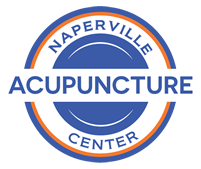Gamer’s thumb a new name for a condition called de Quervain’s Tenosynovitis. De Quervain’s Tenosynovitis is a condition in which the tendons attached to the thumb become inflamed. It is most often experienced as pain on the thumb side of the forearm and wrist
Causes And Pathology
Tenosynovitis may be caused by direct trauma; but is more commonly caused by overuse. Excessive use of the thumb muscles in gaming or other thumb-intensive activities, may lead to inflammation of the tendon sheaths.
Gamer’s thumb is an inflammatory problem but not directly of the tendons. Instead, it is an inflammation of the sheath surrounding the tendons. This distinguishes it from other problems such as tennis elbow, which is more properly called a tendonosis.
Signs And Symptoms
- Thumb pain after texting or gaming
- Pain and swelling near the base of the thumb
- Wrist pain, possibly traveling up the arm
- Thumb and wrist pain worse with movement
- A catching or popping sensation when moving the thumb.
Diagnosis
The key orthopedic test is known as Finkelstein’s test. In this test, the thumb is gripped in the palm of their hand and the wrist is bent to the pinky side of the hand. wrist to the pinky side of their hand. A sharp pain along the wrist tendons (extensor pollicis brevis and abductor pollicis longus) is considered a positive test.
Conventional Treatment
Treatment goals for de Quervain tenosynovitis include reducing inflammation, restoring movement in the thumb, and maintaining the range of motion of the wrist, thumb, and fingers. Treatment may include icing and splinting the thumb and wrist. Pain medications such as NSAIDs may also be used. In severe cases surgery may be considered.
Acupuncture Treatment
Acupuncture treatment begins with examining the motion of the thumb, as well as the wrist and elbow. The goal is to first reduce tension on the muscles, then reduce pain in the affected areas. The treatment involves using acupuncture on the abductor pollicis longus and extensor pollicis brevis, as well as other wrist and hand muscles. We may combine the acupuncture with soft tissue techniques (gua sha and tui na), and taping.
Sources
Vizniak, Nikita. Conditions Manual. Professional Health Systems, Inc., 2010
Hertlin, Darlene, and Kessler, Randolph. Management of Common Musculoskeletal Disorders, Physical Therapy Principles and Methods 3rd Edition, Philadelphia, Lippincott, 1996
Reaves, Whitfield with Bong, Chad. The Acupuncture Handbook of Sports Injuries and Pain, A Four Step Approach to Treatment, Boulder, CO, Hidden Needle Press 2009
Callison, Matt. Sports Medicine Acupuncture: An Integrated Approach Combining Sports Medicine And Traditional Chinese Medicine, San Diego, AcuSport Education 2019
This information is for educational purposes only and is not intended to replace the advice of your doctor. Naperville Acupuncture Center disclaims any liability for the decisions you make based on this information.
The information contained on this website does not establish, nor does it imply, doctor-patient relationship. Naperville Acupuncture Center does not offer this information for diagnostic purposes. A diagnosis must be provided by a licensed physician and is not assumed based on the information provided.
